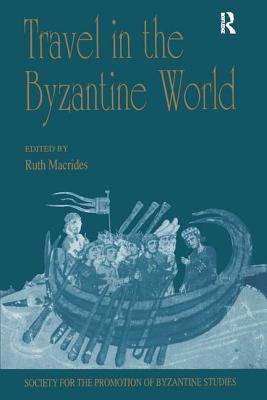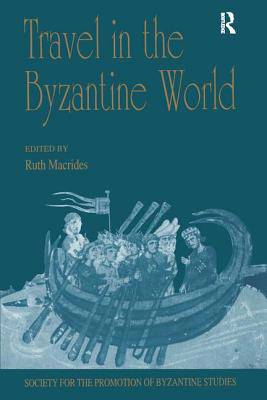
- Afhalen na 1 uur in een winkel met voorraad
- Gratis thuislevering in België vanaf € 30
- Ruim aanbod met 7 miljoen producten
- Afhalen na 1 uur in een winkel met voorraad
- Gratis thuislevering in België vanaf € 30
- Ruim aanbod met 7 miljoen producten
Zoeken
Travel in the Byzantine World
Papers from the Thirty-Fourth Spring Symposium of Byzantine Studies, Birmingham, April 2000
€ 195,95
+ 391 punten
Omschrijving
The contributions to this volume have been selected from the papers delivered at the 34th Spring Symposium of Byzantine Studies at Birmingham, in April 2000. Travellers to and in the Byzantine world have long been a subject of interest but travel and communications in the medieval period have more recently attracted scholarly attention. This book is the first to bring together these two lines of enquiry. Four aspects of travel in the Byzantine world, from the sixth to the fifteenth century, are examined here: technicalities of travel on land and sea, purposes of travel, foreign visitors' perceptions of Constantinople, and the representation of the travel experience in images and in written accounts. Sources used to illuminate these four aspects include descriptions of journeys, pilot books, bilingual word lists, shipwrecks, monastic documents, but as the opening paper shows the range of such sources can be far wider than generally supposed. The contributors highlight road and travel conditions for horses and humans, types of ships and speed of sea journeys, the nature of trade in the Mediterranean, the continuity of pilgrimage to the Holy Land, attitudes toward travel. Patterns of communication in the Mediterranean are revealed through distribution of ceramic finds, letter collections, and the spread of the plague. Together, these papers make a notable contribution to our understanding both of the evidence for travel, and of the realities and perceptions of communications in the Byzantine world. Travel in the Byzantine World is volume 10 in the series published by Ashgate/Variorum on behalf of the Society for the Promotion of Byzantine Studies.
Specificaties
Betrokkenen
- Uitgeverij:
Inhoud
- Aantal bladzijden:
- 316
- Taal:
- Engels
- Reeks:
Eigenschappen
- Productcode (EAN):
- 9780754607885
- Verschijningsdatum:
- 5/09/2002
- Uitvoering:
- Hardcover
- Formaat:
- Genaaid
- Afmetingen:
- 156 mm x 233 mm
- Gewicht:
- 623 g

Alleen bij Standaard Boekhandel
+ 391 punten op je klantenkaart van Standaard Boekhandel
Beoordelingen
We publiceren alleen reviews die voldoen aan de voorwaarden voor reviews. Bekijk onze voorwaarden voor reviews.










